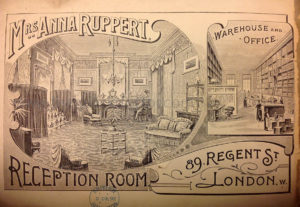The proprietor of this remedy, Thomas Greenough, was better known for his other preparation, the Lozenges of Tolu, which were for coughs and colds. The Samaritan Water, patented in 1779, was not widely advertised, but the lozenges continued to be sold by Greenough’s successor at Ludgate Hill, R. Hayward, during the first half of the 19th century.
Greenough’s other remedies included the Tincture for the Tooth-Ach, Tincture for the Teeth and Scurvy, and the Volatile Salt of Vinegar, which supposedly prevented the plague and smallpox.
(Image: Christ and the Samaritan Woman, Anon, 18th century)
By the KING’S PATENT.
THE UNIVERSAL BALSAMICK, CALLED
SAMARITAN WATER.
THIS admirable Water merits, in the greatest degree,
the attention of the public, being the best remedy
yet discovered for almost every outward or local com-
plaint, and more particularly for the following: viz.
1. For Strains, Bruises, and Injuries from Blows or
Falls.
2. For fresh wounds of every kind.
3. For old Sores and Ulcers, even of the very worst
Nature.
4. For inflammatory Tumours, Boils, Whitlows, &c.
5. For the Erysipelas, or St. Anthony’s Fire, the
Shingles, Tetters, and all sharp scorbutic Eruptions, es
pecially for that commonly obstinate complaint, a Scald-
head.
6. For hard Swellings in the Breasts, whether pro
ceeding from Blows, coagulated Milk, or any other
cause.
7. For preventing Cancers; or, if already formed, for
stopping their further progress, and easing the pain.
8. For White Swellings on the Joints, swelled Glands,
and all disorders of a scrophulous nature.
9. For Weakness or Soreness of the Eyes, Specks up-
on the Cornea, Heat and Inflammation of the Eye-lids,
&c.
In all the above cases, and in many others, it is the safest
and most certain application that can be made use of,
never failing to give relief, performing Cures in half the
time commonly required, and even where every other
means have been tried in vain. And will be found, upon
trial, to be in reality, and Universal Balsamick and Infal-
lible Remedy for almost all external complaints.
Sold by appointment of the Patentee, T. GREENOUGH,
Chemist, at NO. 10, Ludgate-Hill, London; and by
HUSBAND, ELDER and CO. facing the Tron-Church,
Edinburgh. Price 2s. 6d. each Bottle.
N.B. A more particular account of the nature and ef-
fects of the Samaritan Water may be had GRATIS at the
above places.
Source: The Edinburgh Advertiser, Tuesday 1 April 1783



